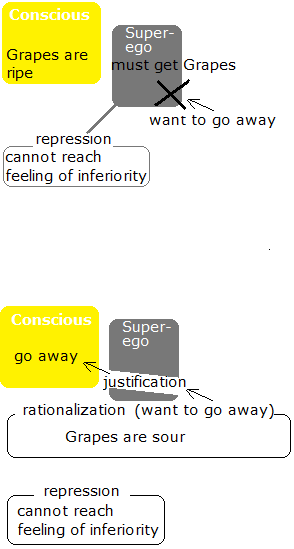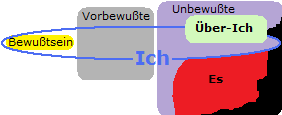The Kuriki method (the first edition in 2007) is a theory about Tourette’s syndrome (tic disorder) and obsessive-compulsive disorder to cure these diseases without medication. This theory is based on the author’s inference and interpretation regarding the structure of these diseases. Since it has been written for the psychoanalysts, reading will be difficult for people in general and it might be sometimes read erroneously. Therefore the Kuriki method must presuppose that the patient is treated by a nearby psychoanalyst, and that, between the patient and the Kuriki method, there is always the psychoanalyst. The explosion of emotional catharsis, which has strong repercussions, is done only for three seconds, once a week: beyond this rhythm, it would be an accident caused by negligence, and the psychoanalyst who is inexperienced in emotional catharsis must take responsibility for the temporary mental collapse caused by the accident. Also, to the patient who has weak capacity of logical reasoning, the psychoanalyst must explain well on the violent emotion of revenge caused by the illusory confusion between the person of the traumatic image in his head and the person in the real world.
Cure for Tourette’s syndrome (tic disorder) and OCD without medication
§13

THE FOX AND THE GRAPES
<AESOP’S FABLES; Project Gutenberg, transl. V. S. Vernon Jones>
A hungry Fox saw some fine bunches of grapes hanging from a vine that was trained along a high trellis, and did his best to reach them by jumping as high as he could into the air. But it was all in vain, for they were just out of reach: so he gave up trying, and walked away with an air of dignity and unconcern, remarking, “I thought those grapes were ripe, but I see now they are quite sour.”
§13 – §17
Rationalization (psychoanalytic term, psychological term)
The Kuriki method considers tic disorder as a mechanism of repression. Repression is done with a mechanism of watching something else in order not to watch a thing. It is a paradox because we need to watch this thing in order not to watch it; this paradox will be resolved, if the Unconscious watches this thing and prevents the Conscious from watching it. The center of the disease is that only the Unconscious has to be watching this thing all the time. Tic disorder has an unconscious function that selects randomly something else with an invented pretext. In the Kuriki method, this function is called rationalization.
§13 – §17, the descriptions are intended to explain these three points.
1. The muscle for the « compulsive intramuscular sensation» of tic disorder is selected arbitrarily, and the tic movement has no meaning as an expression. (The upper layer).
2. The execution of a tic movement is always accompanied by a false motive. (The upper layer).
3. The operation of repression on bodily sensations serves to repress the mass of emotion. The repression of the lower layer by the existence of the upper layer is a double structure of repression, with a double structure of rationalization. An upper layer is arbitrarily selected from tic disorder, obsessive compulsive disorder, etc., on an identical lower layer. The rationalization on the lower layer chooses an upper layer, that is a false disturbance that can be seen as quite other thing than the mass of emotion. In a state of neurosis, the repression on this psychic cause is done by a physical symptom: the symptom is the function of repression. The existence of a KV is another existence that hides the existence of a mass of emotion. “Having a neurosis” and “a mass of emotion” are in the same category. “Because I have a weird disease” : this motive (justification) occupies the foreground of the Conscious. (The lower layer).
Rationalization is a term of psychoanalysis and also of psychology, and there is a big difference between the rationalization in Freud’s psychoanalysis and the rationalization in the Kuriki method. First, §13 is description of the rationalization in psychoanalysis of Freud.
In this section, the word “reason” means the reason that justifies an act, and that answers the question “why”.
§13
Rationalization in Freudian psychoanalysis
Since 1923, Sigmund Freud expressed the explanation of neurotic therapy as his metapsychology. The representation of the three components of the Unconscious is only a way to describe functional tendencies of the Unconscious. This structure is a representation of the functions of the mind, using figuration, however, at the same time, it is important to consider that these elements really exist. It is a mental structure only for treatments of neurosis, and this structure does not make sense in generalization to “healthy people” : i.e., the psychoanalytical terms have meaning only in treatments of neurosis. As it would be ridiculous to put a traffic light in the middle of a desert, the mental structure of psychoanalysis has no meaning for “healthy” mind with no physical symptom of neurosis. This structure was a representation to clearly explain the manner of cure to patients of neurosis, who, in Freud’s day, knew nothing about psychoanalysis. The patient’s clear understanding about Freudian treatment was the primary therapeutic tool.

The Id (das Es)
In the area of the Unconscious (das Unbewußte), there are the Ego (das Ich), the Super-ego (das Über-Ich) and the Id (das Es).
In German, “ich” is the personal pronoun, the first person singular, nominative, and
“es” is the neuter personal pronoun, the third person singular, nominative.
Their datives are not dem dem Mir and dem Ihm.
das Ich, des Ichs, dem Ich, das Ich, die Ich, der Ichs, den Ichs, die Ichs.
das Es, des Es, dem Es, das Es, kein Plural.
The third person neuter personal pronoun is not only for a thing.
For translation into a language that does not have third person neuter personal pronoun, it is difficult to choose a name. The word “das Es” had already been used by Nietzsche for the unconscious part of the psychic structure, as a noun rather than an adjective (adverb).
In English translations, a Latin third person neuter personal pronoun “id” is used.
The Ego (das Ich)
A large part of the Ego is in the domain of the Unconscious. If there are the Super-ego and the Id in the Unconscious, and if their effects appear in the Conscious, there must be a central component that receives the Super-ego and the Id in the Unconscious. The Ego is the “relationship” between the Id and the Super-ego. Repression, rationalization, etc.., are functions of the Ego. Neurosis is a disease of the Ego of how to receive the Super-ego and the Id in the Unconscious. The Ego is a purely theoretical component. For conscious thinkings, it is the small conscious part of the Ego that thinks, such as : “This man plays piano very well like Thelonious Monk !!” for example, and it is not the large unconscious part of the Ego. The Ego is not just only this small Conscious which thinks, but the combination with the large component which makes the Conscious think. The understanding of mental structure in psychoanalytic theory is not intuitive. If understanding is only un intuitive understanding, understanding of theories of mental structure will be something “difficult”, just like logarithm calculations, which are easy to do.
Interpretation of Freudian rationalization from the point of view of the Kuriki method.
Aesop’s “Sour Grapes” is the story of a fox, that is alone. Since there is nobody around him, it is only the problem of him, only for himself. After several attempts to reach some grapes in vain, the Unconscious wants the Conscious to give up and go away, but it may affect the repressed feeling of inferiority. The Unconscious uses rationalization so that the Conscious leave the grapes. By rationalization, the concrete physical solution to the disagreeable physical sensation is presented in the Conscious. The Conscious decides to give up, with a thought that comes to mind, such as; “Very often these grapes are sour.” A whatever reason (a motive, a purpose) is needed so that the Conscious does a conscious act. When the Unconscious wants the Conscious to do an act and if the motive could incur an object of repression, the Unconscious finds a false motive. A false motive, which is extremely infantile. The Super-ego allows the false motive pass through the gate of censorship as something infantile. The act of an unconscious motive can not be consciously done without being accompanied by any conscious motive. The Conscious of the fox knows that, as he has not tasted these grapes yet, the false motive is irrational. The false motive (rationalization) is part of the repression function. The repression of this fox is not the repression against the fact that he cannot reach these grapes, but the repression against the existence of the feeling of inferiority. A false motive, such as these grapes cannot satisfy the gourmet, passes the Super-ego, and the act of going away will be done. A false motive is chosen arbitrarily among several possibilities; it can be also : “Because there are worms.” or “Because there will be other foxes who want to eat these grapes”, etc.
The concept of rationalization makes sense only for the patients with neurosis. The patients with neurosis are people who have physical symptoms of neurosis. It is regrettable that often, like Anna Freud, rationalization is described as a defense by the Ego (reality principle) against the Id (pleasure principle) with healthy “psychological” structure by people who do not know that psychoanalysis is only for treatments of neurosis. An extremely trivial psychology, that even children already know, was named “defense mechanisms” with the list of normals behaviors of very healthy persons. As one of her father’s daughters, with the name of Anna Freud, her psychology can be taken for a psychoanalytic theory. Without any intention to stand on the extension of her father, Anna Freud made books on normal healthy psychology, which everyone knows without reading. Because there were very rare people who needed to read to know it. In addition, if, in descriptions of psychoanalysis by various psychologists, descriptions of the defense mechanisms of Anna Freud has been mixed, as the corporeality of neurosis may have been ignored, no-specialized readers in psychoanalysis should be careful.
Resistance
When people who have tic disorder or the parents of children who have tic disorder read descriptions of the Kuriki method, the Unconscious will prevent the Conscious to read them. This resistance can appear in the Conscious as criteria for the validity of the theory, and block the desire to read with grammatical errors, typographical errors, translation errors, etc. “I don’t read it, because there are typographical errors”; this consideration can be already a sign of the effect of the Kuriki method. (However, it is very important to read the Kuriki method as slowly as possible. Also, as the understanding is the understanding on the part of the reader, the Kuriki method can be simple suggestion of orientation to cure tic disorder by himself, and the reader can make his own reasoning in that direction.) The patient must remark and observe the resistance of the Unconscious to the method Kuriki. Emotional catharsis is to be done only once a week, three seconds, but the resistance of the Unconscious will provoke negligence. There will be resistance of the Unconscious to mark on the calendar the day of each week over three months. Therefore, a patient who denies the Kuriki method even before reading it will be cured of his tic disorder very well, as the resistance of the Unconscious using Freudian rationalization is very obvious.
